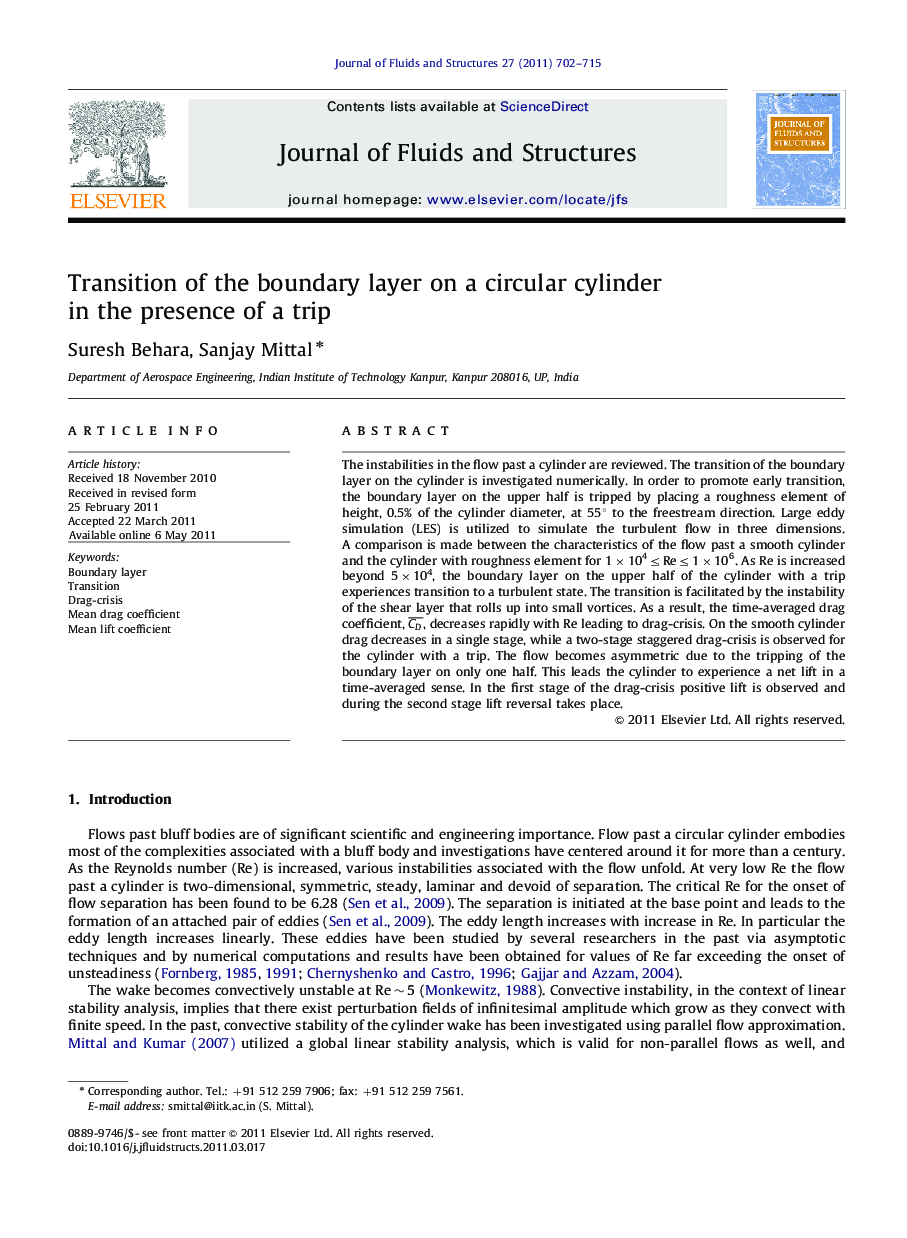| Article ID | Journal | Published Year | Pages | File Type |
|---|---|---|---|---|
| 792455 | Journal of Fluids and Structures | 2011 | 14 Pages |
The instabilities in the flow past a cylinder are reviewed. The transition of the boundary layer on the cylinder is investigated numerically. In order to promote early transition, the boundary layer on the upper half is tripped by placing a roughness element of height, 0.5% of the cylinder diameter, at 55° to the freestream direction. Large eddy simulation (LES) is utilized to simulate the turbulent flow in three dimensions. A comparison is made between the characteristics of the flow past a smooth cylinder and the cylinder with roughness element for 1×104≤Re≤1×1061×104≤Re≤1×106. As Re is increased beyond 5×104, the boundary layer on the upper half of the cylinder with a trip experiences transition to a turbulent state. The transition is facilitated by the instability of the shear layer that rolls up into small vortices. As a result, the time-averaged drag coefficient, CD¯, decreases rapidly with Re leading to drag-crisis. On the smooth cylinder drag decreases in a single stage, while a two-stage staggered drag-crisis is observed for the cylinder with a trip. The flow becomes asymmetric due to the tripping of the boundary layer on only one half. This leads the cylinder to experience a net lift in a time-averaged sense. In the first stage of the drag-crisis positive lift is observed and during the second stage lift reversal takes place.
